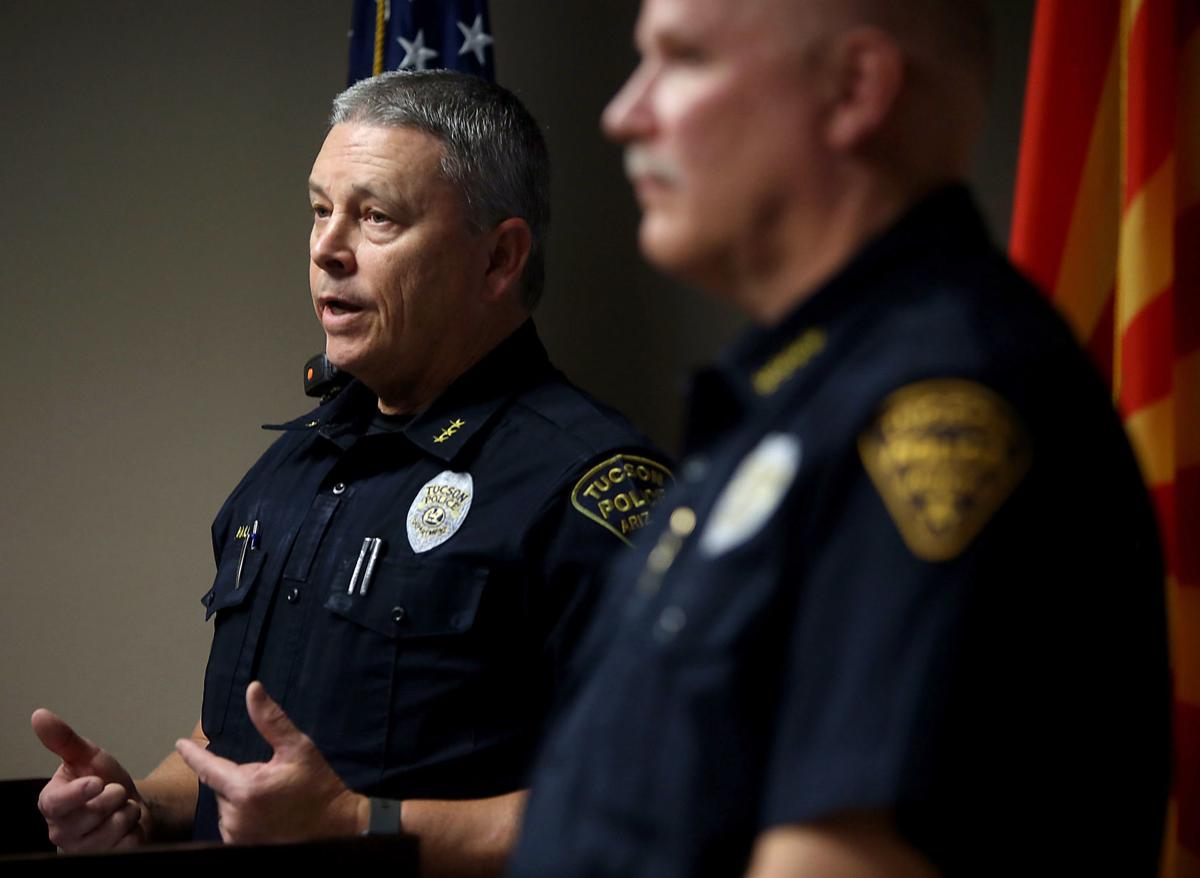A 19-year-old man who died of a suspected opioid overdose triggered Tucson Police Chief Chris Magnus to hold a news conference Friday, bringing awareness to available treatment options.
On Thursday, officers were flagged down on Tucson’s south side where they found a 20-year-old man unconscious and in need of medical attention.
While waiting for assistance from Tucson Fire, officers used naloxone to help the man. Naloxone, also known under its brand name Narcan, is used to reverse opioid overdoses and can be purchased over the counter.
Magnus calls it life-saving.
Officers at that call learned that there were several others in a home a few miles away, including the 19-year-old man who later died, also experiencing potential opioid overdoses. Officials believe the drugs might have been synthetic or contained fentanyl.
Four of the people found at the home received medical treatment and are recovering, likely as a “result of our officers administering naloxone,” Magnus said at the Friday conference.
Magnus thanked the people who initially waved down a police, notifying officers of the overdoses.
He reminded people that those who alert Tucson police of overdoses, “no longer have to fear prosecution.”
Magnus praised the benefits of naloxone and said more law enforcement agencies need to carry the drug. “But we’ve got a problem. Not every law enforcement agency in our state or for that matter, in our region, issues this life-saving drug to their officers or deputies, even though it’s safe, easy to use, and relatively inexpensive.”
“Community members should be asking, ‘Why is that the case?’ and insisting that this change,” he added.
Deputies with the Pima County Sheriff’s Department are among the local law enforcement officers who don’t carry naloxone.
Sheriff Mark Napier has said there are concerns that naloxone would become ineffective while sitting in the heat. And because of Pima County’s large size, EMS personnel are usually on scene before deputies, he said.
“Nothing about this position should be construed to be an indication of a lack of compassion for overdose victims or support for this lifesaving drug,” Napier said in an email. “At present, we simply do not believe routine deployment is feasible.”
Besides naloxone, Magnus mentioned the department’s new deflection program, started in July. Part of the program gives officers the discretion to direct people into treatment instead of jail.
“Incarcerating people who possess or use small amounts of illegal drugs isn’t effective and does nothing to address their underlying challenges with addiction,” Magnus said.
The program is for people using or possessing small amounts of pocket drugs, especially opioids, or related paraphernalia. It is not for anyone distributing or selling drugs, Magnus said.
Those seeking treatment can also visit any Tucson police station or flag down an officer on the street, said Assistant Police Chief Kevin Hall. Since July, more than 100 people have used the program.
“This whole program is about saving lives,” Hall said.





